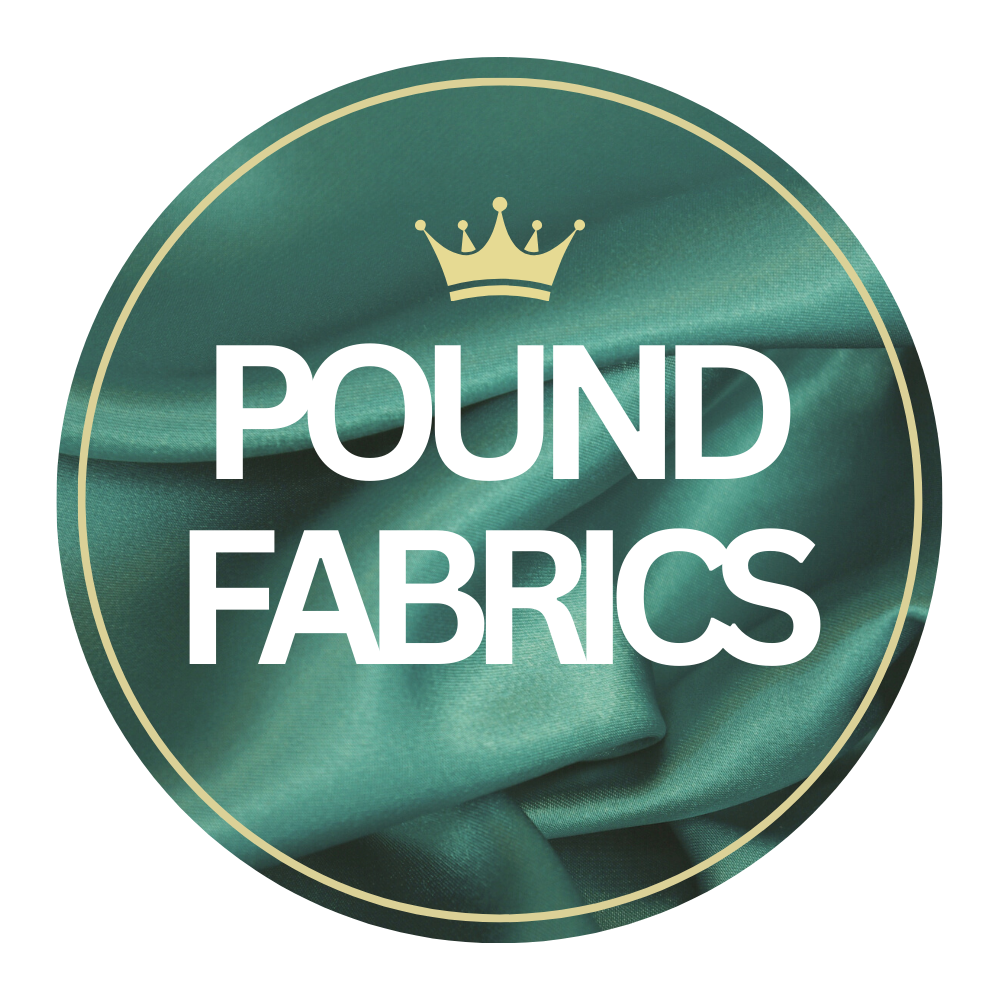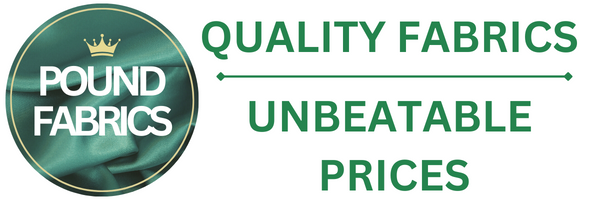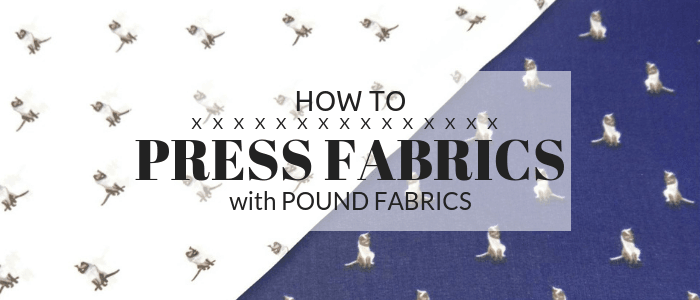
To get the best, most professional results, pressing is an essential sewing skill to obtain. Careful pressing, rather than ironing, ensures that you end up with a shaped, creaseless garment that hangs perfectly. This guide is designed to help you press your projects and to share a few tips that will help making your sewing easier. To press a garment means to move the iron across the fabric by lifting it up and placing it back down, overlapping the areas you have already pressed with a light, even pressure. Ironing is different, as you slide the iron across the fabric. When making up your project, ironing may misshape your garment, so it is best to utilise pressing techniques.
Press as you go:
Pressing seams and pattern pieces as you go ensures that you achieve a crisp, professional finish for your garment. Pressing as you go requires you to never cross a seam, unless you have first pressed it. If you are a more confident sewer, try to sew several different parts of your garment, so you are not constantly swapping between sewing and pressing your project.
How to get the best results:
Press Flat Along Stitching Lines: this ensures that the stitches blend into the seam, and do not show on the outside, as they shrink a little to fit snugly.
Press Seam Allowances Open/to One Side: pressing seams open, or to one side to be overlocked, helps reduce bulk in the garment, and prevents twisting and gathering at seam lines, as the seam allowances are less likely to catch and move around.
Press from the Right Side: this prevents impressions from seams on the right side, but may make the surface shiny. To prevent this, use a pressing cloth.
Use Light Pressure: this prevents delicate fabrics from getting seam impressions or damage, and stops pile or textured fabrics from having their surface flattened. Some fabrics like this may require finger pressing, using steam and your fingers to smooth out the fabric and seams.
Press as you go guidelines:
This handy chart will help you determine what sort of heat, pressure, steam level and technique you should employ when pressing your garments. To get the best results, always test on a sample of your fabric before using pressing techniques on your final garment.
|
TEXTURE |
PRESSURE |
HEAT |
MOISTURE |
SPECIAL INSTRUCTIONS |
|
Crepe |
Light |
Low |
Dry iron |
Use a pressing cloth, press on right side |
|
Deep Pile |
Light or finger press |
Moderate |
Steam |
Experiment on scraps for exact pressure |
|
Glossy |
Light |
Very low |
Dry iron |
Use a pressing cloth, press on right side |
|
Napped |
Light or finger press |
Low |
Dry or steam |
Press over needle board, light pressure or finger press |
|
FIBRE |
PRESSURE |
HEAT |
MOISTURE |
SPECIAL INSTRUCTIONS |
|
|
Acetate |
Light |
Very low |
Dry iron |
Use a pressing cloth, press on right side |
|
|
Acrylic |
Light |
Low |
Dry iron |
Use a pressing cloth, press on right side |
|
|
Cotton |
Light to moderate |
Moderate to high |
Dry or steam |
Press with steam. You may want to dampen fabric and press with a dry iron. Avoid shine by pressing on the prong side, or using a pressing cloth on right side |
|
|
Linen |
Light to heavy |
High |
Dry or steam |
Press with steam. You may want to dampen fabric and press with a dry iron. Avoid shine by pressing on the prong side, or using a pressing cloth on right side |
|
|
Nylon |
Light |
Low |
Dry or steam |
Little / no ironing needed |
|
|
Polyester |
Moderate |
Low to moderate |
Dry or steam |
Use a pressing cloth, press on right side |
|
|
Rayon |
Light |
Low |
Dry or steam |
Use a pressing cloth, press on right side. This prevents shine and water marks |
|
|
Silk |
Light |
Low |
Dry or steam |
Press light/medium weight with a dry iron. Press heavyweight with steam and a pressing cloth to avoid water marks |
|
|
Wool |
Light to moderate |
Low to moderate |
Dry or steam |
Press with steam. You may want to dampen a pressing cloth and dry iron. Use pressing cloth to prevent shine and water marks |
|
|
Blends |
Press according to the most delicate blended fibre |
||||
Pressing equipment:
As well as using an iron and ironing board, there are several pieces of kit which can make pressing a little easier or can help you achieve a particular shape or style.
SEAM ROLL
A seam roll is essential for pressing seams open on long, cylindrical elements of your garment such as sleeves, and trouser legs. If you press the seams of your project open using this and the tip of your iron only, then the curved surface prevents the iron from leaving seam impressions.
PRESSING CLOTHS
These are used between your iron and your garment, to prevent you from scorching and damaging your fabric or creating shine. The best fabric to use for this is Muslin.
POINT PRESSERS / TAILOR’S BOARD
An ironing surface with multiple edges, perfect for pressing seams open on areas of detail, like collars, cuffs and facings. These are great for shaping perfect points.
TAILOR’S HAM
Good for pressing curved areas, such as those around the bust. This is great to use on darts, princess seams and sleeve caps.
NEEDLE BOARD
This is an essential piece of kit if you sew with a lot of textured or pile fabrics, such as velvet, velveteen and corduroy. You simply lay your fabric face down on the board, and press, with the short, dense needled surface preventing the pile from being flattened by the weight of the iron.
SLEEVE BOARD
This is like a mini ironing board, perfect for pressing narrower sections of garments that won't fit over the end of a regular sized ironing board.
These are just a few techniques that will help you use your iron to make your sewing easier!
To see our full range of fabrics, please click here.
Make sure to tag us @poundfabrics and show us your creations on Instagram, Facebook and Twitter!
Copyright © 2019 Pound Fabrics. All Rights Reserved











Leave a comment (all fields required)